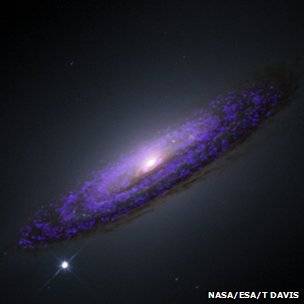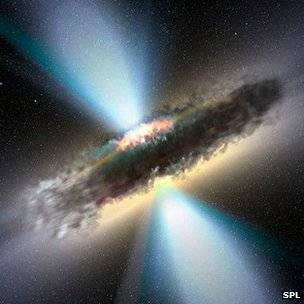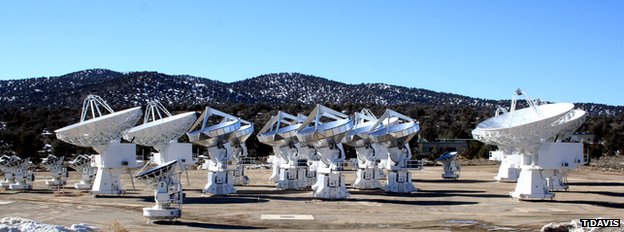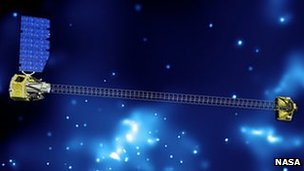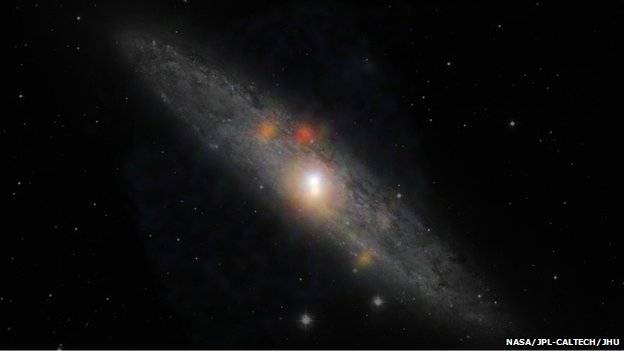Mebbe it's already sucked most of the galaxy in it...

Giant black hole in tiny galaxy confounds astronomers
29 November 2012 - Astronomers have spotted an enormous black hole - the second most massive ever - but it resides in a tiny galaxy.

Giant black hole in tiny galaxy confounds astronomers
29 November 2012 - Astronomers have spotted an enormous black hole - the second most massive ever - but it resides in a tiny galaxy.
The galaxy NGC 1277, just a quarter the size of our own Milky Way, hosts a black hole 4,000 times larger than the one at the Milky Way's centre. A report in Nature shows it has a mass some 17 billion times that of our Sun. The surprise finding is hard to reconcile with existing models of black hole growth, which hold that they evolve in tandem with host galaxies. Getting to grips with just how large black holes are is a tricky business - after all, since they swallow light in their vicinities, they cannot be seen.
Instead, astronomers measure the black holes' "sphere of influence" - the gravitational effects they have on surrounding gas and stars. In the Milky Way, it is possible to observe individual stars as they orbit Sagittarius A, our own local black hole, to guess its mass. But for the 100 or so far more distant black holes whose masses have been estimated, astronomers have made average measurements of associated stars' speeds - their "velocity dispersion". On a hunt for the Universe's largest black holes, astronomers using the Hobby-Eberly Telescope in the US state of Texas undertook a survey that brought in a haul of nearly 900 host galaxies.
'Big jigsaw'
But Remco van den Bosch, then at the University of Texas at Austin, and his colleagues were surprised to find that some of the largest black holes were to be found in small galaxies. Among them was NGC 1277, 220 million light years away in the constellation Perseus, which happens to appear also in a high-resolution Hubble Space Telescope image, helping the researchers to refine their computer models. "We make a model of the galaxy and compute all the possible stellar orbits," Dr Van den Bosch, who is now at the Max Planck Institute for Astronomy in Germany, explained to BBC News. "Like a big jigsaw, we try to put those orbits together to reproduce that galaxy so it has the same stellar velocities we measure. " What the team found was that the NGC 1277 black hole was enormous - as large as our Solar System, and comprising some 14% of the entire galaxy's mass.
"The only way to you can actually make those high dispersions in the centre is by having that really big black hole, there's really no other way around it," Dr Van den Bosch said. What is more, the team have five other small-galaxy candidates that, with the help of more data, could disprove the rule that big black holes only happen in big galaxies. But NGC 1277 is stranger still, and could help advance our theories of how black holes evolve in the first place. "This galaxy seems to be very old," Dr Van den Bosch said. "So somehow this black hole grew very quickly a long time ago, but since then that galaxy has been sitting there not forming any new stars or anything else. "We're trying to figure out how this happens, and we don't have an answer for that yet. But that's why it's cool."
BBC News - Giant black hole in tiny galaxy confounds astronomers


